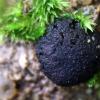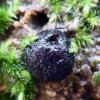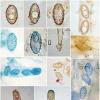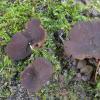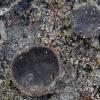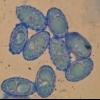
15-12-2025 15:48
 Danny Newman
Danny Newman
Melanospora cf. lagenaria on old, rotting, fallen

15-12-2025 15:54
 Johan Boonefaes
Johan Boonefaes
Unknown anamorph found on the ground in coastal sa

15-12-2025 21:11
 Hardware Tony
Hardware Tony
Small clavate hairs, negative croziers and IKI bb

15-12-2025 07:09
 Danny Newman
Danny Newman
indet. Rutstroemiaceae sp. on unk. fallen leavesMc

15-12-2025 07:05
 Danny Newman
Danny Newman
Pseudosclerococcum golindoi (det: Zotto)near Cosb

15-12-2025 11:49
 Danny Newman
Danny Newman
ITS sequences from the following two collections B

15-12-2025 12:34
 Danny Newman
Danny Newman
indet. Rhytismataceae on oak leafnear Purchase Roa

09-12-2025 12:06
 Andgelo Mombert
Andgelo Mombert
Bonjour,Je recherche l'article concernant Hypobryo
 Hi,
Hi,I wil copy/paste some data from other topic, sorry once more for the incovenience.
Found one discoid apothecia (0,4 cm diam.) on wet and sprinkled riverbank, covered in moss in Medittereneaen part of Bosnia and Herzegovina (28.08.2016., just above 110 m)
Ascospores brownish: 17.5 - 19.7 x 9.2 - 10.7 µm
Paraphyses up to 10 µm in the apex, on average 6-9 µm wide, usually emerged in brown pigment.
I`m not sure whether or not this could fit P.limnaea. Distincly brown spores, and highly pigmented paraphyses and area around are some of the uncertainties. On the other hand ecology/elevation of P. alaskana is much more different (not inculding record from Israel).
What do you think? Appreciate any comments.
Regards,

So it's hard to give a correct determination based on one old specimen.

Maybe the same fungus, but I have no name. The close species seems to be P. badiofusca.

That could be the same one.
It is same "mossy" riverbank habitat, but significatly different elevation.
I`ve also noted a presence of small pseudohairs at the margin, up to 75 µm in lenght, and 9 µm wide, elongated from ectal excipulum cells.
Nedim
